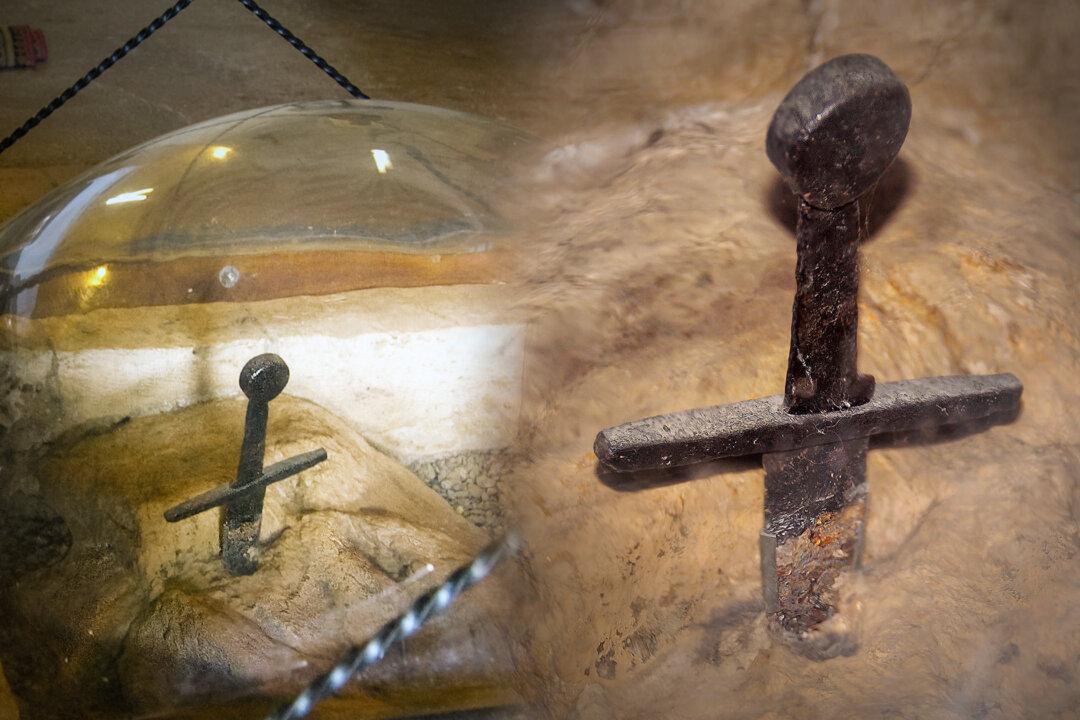The ruthless knight Galgano Guidotti was done fighting. The son of a noble lord during the time of the Crusades, in his early 30s he experienced a vision of Saint Michael that changed his life. Galgano was called upon to renounce worldly trappings and submit himself to God, so he relinquished station and arms to become a hermit, living on a hill.
The year was 1180 when Galgano retired to a hermitage in Tuscany. In an act that sealed his devotion—in stone quite literally—he impaled his sword, an implement of war, into the ground where it supposedly became lodged; his act signaled peace. The sword handle and crossguard formed the Christian sign and remained beset in stone ever since.






